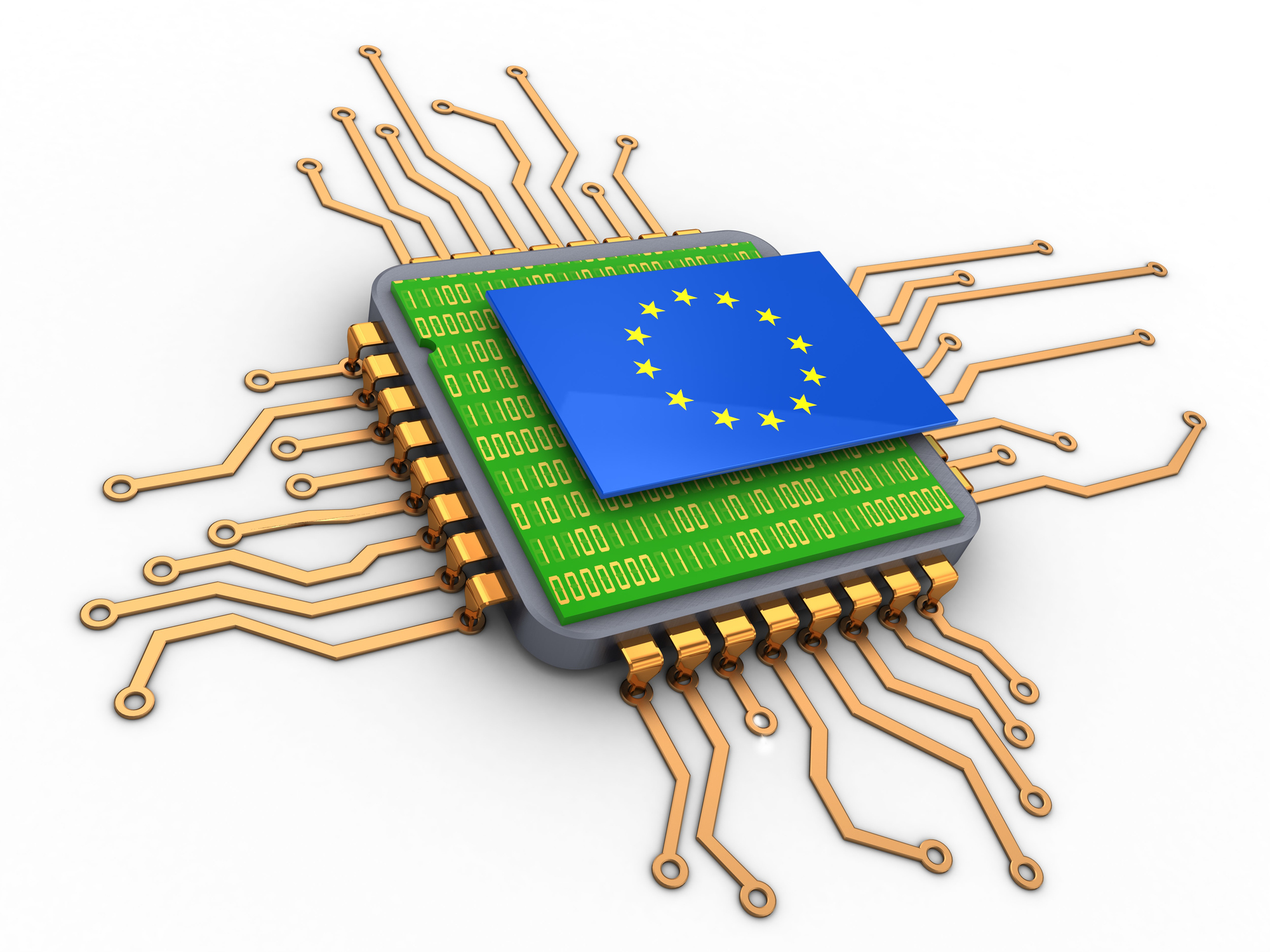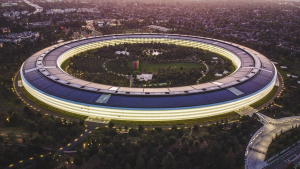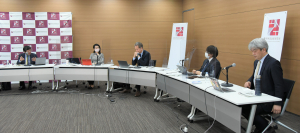
The Governance of Science, Technology, and Innovation Policy Missions for Grand Challenges in Europe
March 29, 2023
R-2022-142
Solving society’s grand challenges requires not only funding R&D but also transforming and redefining existing socio-technical systems, using suitable policy instruments to enhance impact and developing the capacity of public-sector organizations to provide real-life solutions.
Introduction
The European Union and many countries in Europe have started to consider new science technology, and innovation (STI) policy goals, targeting specific missions with the objective of addressing grand challenges.
What are those grand challenges? They are long-term and complex problems that are not always solvable though market processes, as they have also social and organizational dimensions. They typically require combinations of different technologies and require some degree as well of behavioral changes, depending on the nature of the problem to be addressed. Examples of grand challenges include climate change, ageing societies, and sustainable mobility systems.
Overall, when policymakers consider STI policy goals to address grand challenges, it requires thinking about the governance of STI policy in a new and more ‘actionable’ manner, due to the complexity and high-level ambition of these objectives.
In the following, I will address two very important aspects of the governance of this new approach of STI policy missions. Firstly, I will discuss the importance of pondering carefully how to design suitable and ‘nested’ STI policy instruments for addressing those grand challenges. This is because the new goals of STI policy need to be aligned with the way in which the specific policy instruments are designed. And secondly, I will discuss the importance of the capacity (and capacity-building) of the public-sector organizations that are going to be actively implementing these instruments. This is because the implementation of those instruments by public-sector organizations is crucial for the success of STI policy.
The Mission Approach for Solving Grand Challenges
Traditionally, the main goals of STI policy have been twofold, namely, to enhance the frontiers of human knowledge and to improve the technological competitiveness of industry in the economy. The new, third, goal of STI policy is to address grand challenges. This new goal is different from the previous two because it aims at solving long-term and complex problems. And we can perhaps argue that this is far more ambitious.
It is important to acknowledge that grand-challenges-oriented mission goals should not be seen as an alternative, replacing the two traditional goals. Instead, it can be seen as an additional goal. Therefore, today, the two traditional goals (knowledge frontier and technological competitiveness) continue rightly so to be at the core to STI policy rationale.
The novelty of the grand-challenges mission goals of STI policy is the understanding that STI policy can help provide solutions to those complex, long-term problems. Hence, it is generally based on the understanding that STI can help the transformation of socio-technical systems that is required for achieving solutions.
Solving grand challenges requires the transformation and redefinition of existing socio-technical systems. For example, improving urban mobility involves not only improving public and private transport systems in cities but also making them zero-emission systems using clean technologies. And, again, using clean technologies in transport systems is not just about introducing electric cars that use batteries but also about creating a new system of recharging those batteries, about new regulations on the safety of using those batteries, and about securing sufficient supplies of renewable energy in the right quantities and timing to be able to recharge those batteries. In other words, we need a new socio-technical system.
Likewise, introducing electric ships (e-ferries, for example) will require not only new electric ships as such but also the means of training and certifying the maritime captains who will lead those ships, because steering a diesel engine ship and an electrical ship is very different. It will also be important to introduce new maritime safety regulations and certification procedures to warrant the safety of those new vessels.
All in all, it is not only about funding R&D for creating a new generation of electric cars, electric ships, and their batteries but also about considering the regulatory aspects, energy supply aspects, and the training and certification aspects of the overall socio-technical system for the operation of new mobility solutions.
Another example of STI for grand challenges that I think is relevant is providing medicines for neglected diseases, especially those in the Global South. There are many diseases that are still not being addressed because patients are too poor to pay, and therefore there is a lack of market incentives for biotech pharma companies to engage in very expensive research and product development for those medicines. Therefore, today, there continues to be neglected diseases like dengue, Chagas, and leishmaniasis, mainly in Africa, because we still lack affordable medicines to cure them or to vaccinate against them. The irony is that some of the new chemical entities (NCE), the active components that could be the active key ingredients for such new medicines, are already known. However, the medicines have not been developed due to the lack of market incentives. STI policies for grand challenges could target the collaboration of various partners in a drug project for developing those medicines, helping the development and authorization of medicines for patients in the Global South.
Many policymakers have started to set up ambitious goals for STI policy to address grand challenges. But in many ways they are still at the beginning of a long journey, as they are still considering what “mission-oriented” actually means in the context of STI policy and how to design and implement such goals. These are thus very interesting times because academics and policymakers can engage in processes of co-creation on this highly relevant topic.
There are two specific, core aspects of this highly relevant topic. One is that STI policy missions for addressing grand challenges are about transformation—specifically, transforming social-technical systems—because the ambition of this new approach of STI policy is to induce large, durable, and systemic change.
The second point is that new thinking is needed on how to make actionable missions, how to design the governance system and the policy system in order to make them work, because these missions are very ambitious. This requires at least two important considerations, namely, the design of STI policy instruments suitable for the goals of addressing grand challenges and the need to be aware of the importance of public-sector organizations for the implementation of these instruments. The capacity of public-sector organizations to implement these missions should not be taken for granted. I will discuss these matters next.
The Design of STI Policy Instruments
Traditional STI policy instruments have been dominated by those that fund R&D activities. Some of the funding has been more for scientific activities, whereas others have been focused on applied research, technology, and/or development aspects close to the market. So, traditional STI policy instruments are about economically supporting scientific projects, technological projects, or collaborative innovation projects for the purpose of advancing our knowledge frontier and the competitive advantage of our firms.
But now, with the focus on grand challenges, STI policymakers need to think about new types of policy instruments. The grand-challenge-oriented goals require policy instruments that are designed in a broader and different manner. So, according to the policy rationale of mission-oriented and transformative innovation, new policy instruments need to be more inclusive. This means that they need to include new actors. And as I mentioned before, it is not only about private and public actors—traditional research performance actors like universities and industry; it is also about engaging with nonprofit organizations (like patient organizations, social enterprises, and social entrepreneurs), which are typically part of innovation projects. In other words, this is about including new types of stakeholders as partners in innovation consortia formed typically by industry, universities, and public research laboratories. Yet, we know from a recent empirical analysis, that only few grand-challenge-oriented instruments actually do so.
If we want to address grand challenges, the projects also need to be interdisciplinary, crossing typical disciplinary boundaries under so-called “epistemic boundaries spanning.” This is because the grand challenges are complex problems, and therefore solving them requires going beyond one specific technology or one specific field of knowledge.
Another key aspect in the design of STI policy instruments for addressing grand challenges is the need for longer time frames. It is no longer only about developing products and solutions that can be embedded rapidly into the market; it is also about other kinds of solutions that are not necessarily related to the market or to market-related forms of consumption. Just take the example mentioned earlier: developing medicines for poor patients in the Global South cannot take place through market interactions, and many diseases are being neglected. Addressing this grand challenge requires involving nongovernmental organizations (like Médecins Sans Frontières) who are experts in the field and who can bring their knowledge into play in clinical trials on location. And it also requires a time frame that often exceeds the typical time frame of traditional STI policy instruments. Vinnova, the Swedish agency for innovation systems, has designed a STI policy instrument with three stage-gates for funding, with a much longer time frame compared to traditional instruments. The progress of funded projects is assessed after some time, and they do not pass to the next stage-gate if progress has not been sufficient. Successful projects continue receiving funding, whereas funding for less successful projects is terminated.
In a recent comparison of four Nordic countries’ STI policy instruments, we found that two of the STI policy instruments funding programs in Denmark and Finland were very weakly nested into the grand-challenges, mission-oriented, policy rationale. For their part, the Norwegian and the Swedish policy instruments were more novel in their design and more path-breaking in the way in which they have been thinking about policy instruments for grand challenges. And they were far more nested and embedded into a wider kind of socio-technical policy system. So, this is what we have found in our qualitative analysis, compared to the analysis of those four funding instruments (Borrás and Schwaag Serger 2022).
The New Instruments: Importance of Impact and System Thinking
The new instruments toward grand challenges are no longer just about new science, technology, and innovation. They are also about embedding the knowledge and outcomes of STI in specific application domains where they are able to make an impact. Whereas traditional policy instruments are more about the input side of knowledge creation, the new instruments are about finding workable solutions in the context they are to be used. This means that policy instruments not only fund research and development but fundamentally enhances the impact of research and development in ways that they become embedded into the relevant sector or area. This means that STI policy for grand challenges is much more sector-determined. It also means that the application and impact orientation require greater interaction among different units in the government and also among different partners. Grand-challenge-oriented STI policy requires a whole-of-government approach, where the different aspects regarding the impact and uptake of new technologies happen quickly through a more coordinated approach within government and between the government and private, nonprofit actors. This requires system thinking.
We first need to think about what goals, specific missions, and targets we want to address. We can have very ambitious projects, but they need to be narrowed to specific sub-targets that are more doable and realistic. But they should not be so specific that they become technology specific. We need to be a little bit open. Currently, there is a dilemma whether those targets are to be defined as top-level governmental decisions or in a more bottom-up manner, allowing researchers and firms to define their problems and solution spaces in specific projects.
The impact-oriented nature of the grand-challenges STI policy instruments requires not only funding or R&D support but also measures addressing a number of regulatory, organizational, behavioral, and other issues that might be barriers for a rapid uptake and real-world impact of new knowledge.
This will mean including not only private firms and the companies that have those technologies and the capacity to bring them to the market but also, very importantly, many other organizations that are not market players, namely, private, not-for-profit organizations. These organizations are very important in some areas, such as public health, as I mentioned earlier. We have some (private, nonprofit) patient organizations that are very knowledgeable about specific diseases and are very well-organized. Such knowledge can be very useful, and it should be activated and put to use.
Another example of private, not-for-profit groups with relevance for impact-oriented STI policy is energy communities. In many places in Europe at the moment, we have local communities in small municipalities, on small islands, that are organizing themselves to use and test new technologies with solar energy or new types of batteries, because there are many different possible batteries to store excess energy. We have a lot of small communities using new technologies for renewable energy production, sometimes working as testing beds. And these small communities can be very important sources of knowledge, helping to address these grand challenges. Science and technology policy instruments need to allow those private, not-for-profit civil organizations to be engaged in many ways so the creation of new knowledge goes hand in hand with its application and impact-creation.
Grand-challenge-oriented STI policy entails risks and opportunities, but it also addresses tensions that emerge during processes of change. Sometimes there are important path dependencies. Some incumbents—companies that have well-functioning markets—might not be keen on new technologies disrupting their market share. STI policy may be able to deal with some opposition, but such ability is limited because STI policy is mostly focused on the creation of new knowledge and its uptake. However, without consideration of the ‘losers,’ the change required for addressing grand challenges might not take place. Hence, there is a need for system thinking. For that reason, it is essential to consider establishing suitable policy mixes (combinations of different policy instruments) when developing a system approach. We might have a situation where emphasis is placed on funding and testing new technologies but the uptake is held up, for example, by safety regulations that do not allow the scaling up of those technologies. So, we need system-thinking, embedding STI innovation policy instruments in suitable mixes for the uptake and scaling up of new technologies.
EU Policy Instruments
I would like to turn briefly to the situation in the European Union, where we are moving into the mission-oriented approach. The EU has identified five missions that it aims to address during 2021–27 and is in a process of pooling the necessary resources in terms of funding programs, policies, and regulations at the regional, national, and local levels. The idea behind these missions is to mobilize society and such private actors as research institutes, farmers, land managers, entrepreneurs, and corporate investors, along with public actors like municipalities. The missions have a wide-stakeholder approach, creating not only new knowledge but also solutions with the aim of impacting society and the market. That is to say, the EU is actually pursuing the approach mentioned above.
The challenge now is how the EU will make this happen in practical terms, because this mission approach is very new; it was put forward just barely one year ago. Let us consider the governance structure: each mission has a manager, who is a civil servant of the European Commission. Each mission also has a mission board comprising 10 experts who are appointed in their individual capacity. One among them is appointed the chair, typically a high-level ex-politician with visibility and charisma.
The intention is for the boards to push the mission’s agenda. One example of how they are actually doing this is the so-called Cities Mission to build smart, climate-neutral cities. This mission is based on a network of networks called Net Zero Cities. Recently, 100 cities in Europe have been selected and are currently in the process of signing climate city contracts. These are cities that are willing to engage in specific planning and programming about how to achieve net zero emissions.
For example, Copenhagen is mobilizing different actors and deploying a variety of instruments to achieve the mission’s goals. The Cities Mission is multi-level governance in action linking the EU with the national and municipality levels—which is actually something very new. For that reason, it will be relevant to follow up on the implementation of those missions. Among the 100 selected cities, some are already very active in climate solutions, while others will struggle to make the plans work. So, we can expect differences in the way those 100 cities actually implement the plans and the way the multi-level governance mission works.
The Capacity of Public-Sector Organizations
I have been discussing policy instruments, the way they are designed, and the way they are coordinated in the governance system. Now, I would like to address the issue of STI policies addressing grand challenges from an organizational perspective—from the level of individual organizations implementing such policies. The academic literature is increasingly focusing on the capacity of public-sector organizations to implement all these very ambitious STI policy goals.
Public-sector organizations, such as municipalities, regulatory agencies, and public utilities, are typically entrusted to provide solutions and address grand challenges. But do they have the organizational capacity to do so? The new policy approach expects public-sector organizations to engage and mobilize resources, but discussions about implementing policies usually only consider having the correct policy instruments and policy mixes. Also important, though, is the capacity of organizations to actually implement new approaches and instruments.
At the Copenhagen Business School, we have initiated a research project called CAPACITOR in which we are examining the capacity of public-sector organizations to address one of the big grand challenges at the moment: sustainability transitions. How are they doing green innovation, putting green technologies to work toward sustainability transitions?
We are looking at municipalities, national regulatory agencies, and publicly controlled utilities. They are the key actors in the governance of socio-technical systems toward grand transitions, and their capacity will determine whether or not the transition succeeds. We are asking: What are their capacities, how aware are they of their own capacities, and how do they intend to develop and use them? What do we mean by capacity? We have recently done an encompassing literature review, and based on that, we have developed the concept further (Borrás et al. forthcoming 2023). We conceptualize transformative capacity as the outcome of the interaction between the public-sector organization’s purposeful enactment of various roles when exercising change agency and the development of its dynamic skills when mobilizing the internal and external resources at its disposal. This definition, based on the combination of roles, resources, and skills, offers the opportunity to study transformative capacity in a more granular and detailed manner.
We can therefore formulate more specific questions about the implementation of STI policies for grand challenges in the form of missions. Do those public-sector organizations (like the 100 cities in the Cities Mission) have the resources (financial resources, human resources, public mandate, network resources, etc.) sufficient for a successful outcome? Do they have the internal organizational skills (procedures, routines) to coordinate, analyze, and act upon those grand challenges? And last but not least, what is their level of ambition as a city—meaning, what specific roles do they perform as a change agency when fostering new knowledge and new forms of clean technology uptake in their city? Some municipalities may be very ambitious in the roles they want to assume but lack the resources and skills to enact those roles, while others might have substantial resources and well-skilled and organized procedures but lack the ambition and self-definition as an agent of change. The way in which these three core elements interact defines the capacity of public-sector organizations in the implementation of STI policies toward grand challenges.
Electric ferries are one example of this. Battery-driven ferries are a green innovation. In Denmark, there are many islands that depend on ferry connections, but diesel engine ferries are very polluting with high greenhouse gas (GHG) emissions. The starting point was to think whether it was possible to create an electric ferry. Municipalities, regulatory agencies, research laboratories, and publicly controlled utilities were key public sector organizations involved in developing the new electric ferry. These organizations needed transformative capacity, in the form of new roles, resources, and skills, to put into action a new green innovation.
An illustration of this is Ellen, an electrical ferry serving Denmark’s Aero Island that is reducing CO2 emissions by 2,000 tons per year. This is one of the cases we are analyzing in our CAPACITOR research project, which is about how a small island in Denmark has managed successfully to make something very innovative: a battery-driven ferry that travels a long distance (one and a half hours). The batteries had to be very large, so the ship was totally redesigned. Another element was the plug-in to recharge the batteries, which did not exist, so this was also a completely new creation. The new ferry had to be safety approved to be allowed to travel, and the National Maritime Agency, which guarantees onboard safety, had to rethink entirely the procedures for safety approval (which are traditionally for diesel engine ships). So, the agency created a new set of regulatory procedures. The supply of renewable energy when the e-ferry is in dock was another consideration. The energy company needed to provide green energy during the 10 minutes to recharge. Therefore, it was necessary to devise a process to store all that energy close to the dock to enable a quick recharge. The case of the Aero e-ferry shows that all these public-sector organizations were committed to perform roles for a transformative innovation, and their biggest resource was the network of experts in the island’s navigation school. The municipality’s ability to coordinate and mobilize all these resources was a key determinant for success. The successful governance in this case of green innovation was possible because the actors had the capacity to do so. Therefore, it was not only about the Danish government or the EU funding the R&D to develop a battery and e-ferry; it was about the whole ecosystem of actors’ capacity to bring about the solutions needed to make the e-ferry work.
Conclusion and Takeaways
Science, technology, and innovation policy missions for addressing grand challenges are about transformation. Solving grand challenges requires thinking about how to implement those missions in an actionable manner and thinking about governance of socio-technical systems. This means we need policy instruments and policy mixes that are fit for the purpose, designed with an impact orientation and a systemic approach. And we also need public-sector organizations that have the transformative capacity to provide real-life solutions that work.
References
Borrás, S., et al. (forthcoming 2023). The Transformative Capacity of Public Sector Organizations in Sustainability Transitions: A Conceptualization.
Borrás, S. and S. Schwaag Serger (2022). "The design of transformative research and innovation policy instruments for grand challenges: The policy-nesting perspective." Science and Public Policy.
















